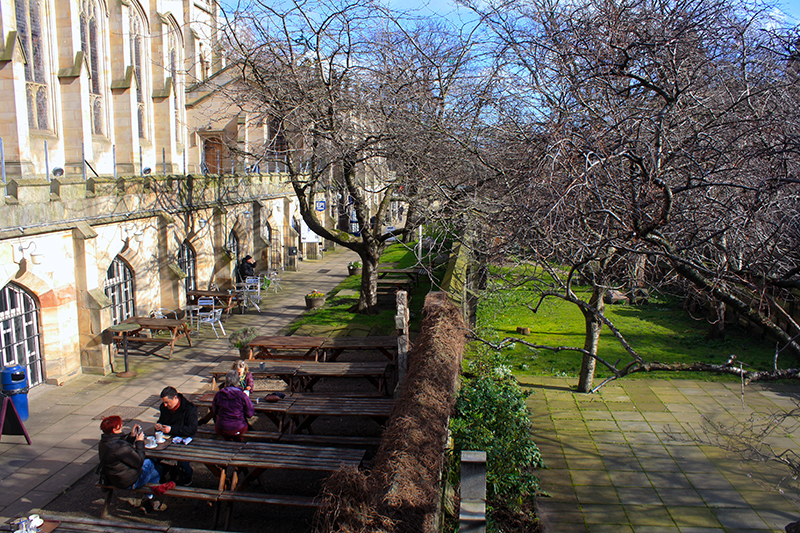
Commonly we cross them to get from point A to B, sometimes we glance through them, continuing on our way, but most of the time, we do not realize they even exist. Colorfully graffitied laneways, short cuts between buildings and even small green areas separating defined spaces; these are some of the many in-betweens we experience living in the city.
However, do we connect such spaces with something more than just transition? Given the opportunity, could these spaces evolve into defined micro public places?
While walking through downtown Edinburgh, I stumbled upon this interesting nook between St. James Church and its graveyard. This relatively small space is used as a transitory zone; providing access to the perpendicular street and situated between two distinct spatial programs. However, the addition of street furniture and some commercial space has created a place people actually stay in as opposed to just passing through. It provides great inspiration as to how transitory zones can be adapted to perform a variety of uses even when they’re positioned between a graveyard and church.
Toronto has huge opportunities to capitalize on underused in-between spaces; the underside of the Gardiner, graffiti alley and even Toronto’s rail paths. The St. James precedent also generates ideas about how we use our cemeteries and the spaces adjacent to them. Can they adapt, improve and perform as a multipurpose place?
Although many of the scales in these examples vary drastically in comparison to St. James Church, the acknowledgment of well-used transitory spaces highlights many considerations as to how Toronto’s public spaces can adapt. The challenge is, how can we begin to rethink and reconfigure them to be more than just the in -betweens.

